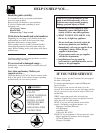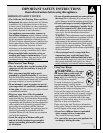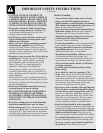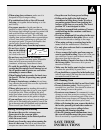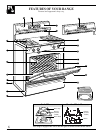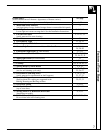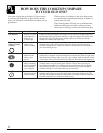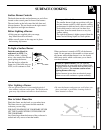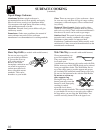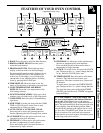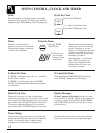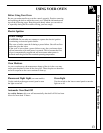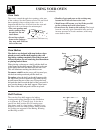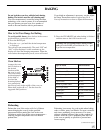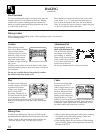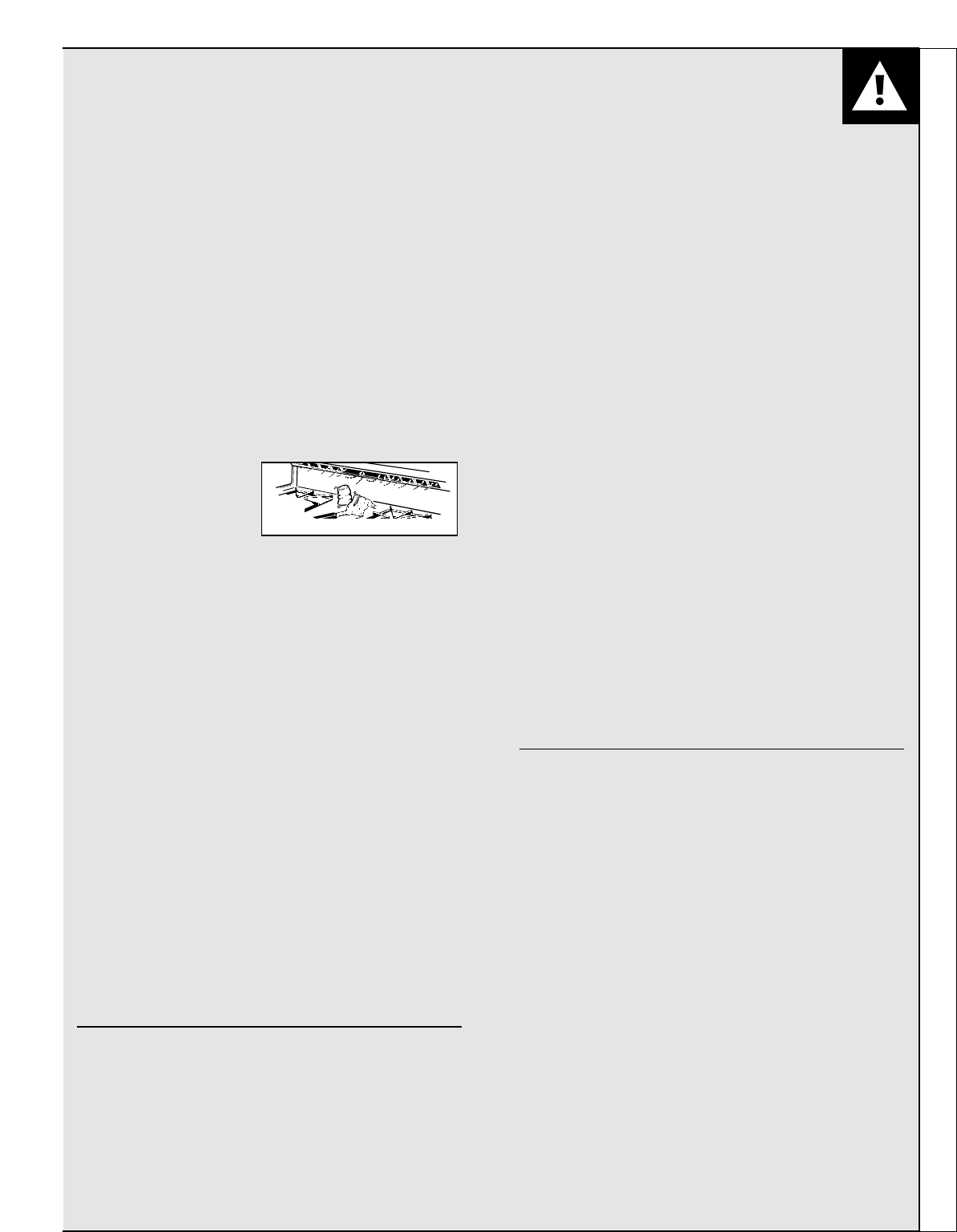
• When using glass cookware, make sure it is
designed for top-of-range cooking.
• If a combination of oils or fats will be used
in frying, stir together before heating or as fats
melt slowly.
• Use proper pan size—Avoid pans that are
unstable or easily tipped. Select cookware having
flat bottoms large enough to properly contain food
and avoid boilovers and spillovers and large
enough to cover burner grate. This will both save
cleaning time and prevent hazardous accumulations
of food, since heavy spattering or spillovers left
on range can ignite. Use pans with handles that
can be easily grasped and remain cool.
• Keep all plastics away from the top burners.
• Do not leave plastic
items on the cooktop—
they may melt if left
too close to the vent.
• Do not leave any items on the cooktop.
The hot air from the vent may ignite flammable
items and will increase pressure in closed
containers, which may cause them to burst.
• To avoid the possibility of a burn, always be
certain that the controls for all burners are at
the off position and all grates are cool before
attempting to remove them.
• When flaming foods are under the hood, turn
the fan off. The fan, if operating, may spread
the flames.
• If range is located near a window, do not hang
long curtains that could blow over the top burners
and create a fire hazard.
• When a pilot goes out (on standing pilot models),
you will detect a faint odor of gas as your signal
to relight the pilot. When relighting the pilot,
make sure burner controls are in the off position,
and follow instructions in this guide to relight.
• If you smell gas, and you have already made sure
pilots are lit (on standing pilot models), turn off the
gas to the range and call a qualified service technician.
Never use an open flame to locate a leak.
Baking, Broiling and Roasting
• Do not use the oven for a storage area.
Items stored in the oven can ignite.
• Place the oven shelves in the desired position
while the oven is cool.
• Stand away from the range when opening the
door of a hot oven. The hot air and steam that
escapes can cause burns to hands, face and eyes.
• Keep the oven free from grease buildup.
• Pulling out the shelf to the shelf-stop is a
convenience in lifting heavy foods. It is also a
precaution against burns from touching hot
surfaces of the door or oven walls. The lowest
position “R” is not designed to slide.
• Do not heat unopened food containers. Pressure
could build up and the container could burst,
causing an injury.
• Do not use aluminum foil anywhere in the oven
except as described in this guide. Misuse could
result in a fire hazard or damage to the range.
• When using cooking or roasting bags in the
oven, follow the manufacturer’s directions.
• Use only glass cookware that is recommended
for use in gas ovens.
• Always remove the broiler pan from range as
soon as you finish broiling. Grease left in the pan
can catch fire if oven is used without removing
the grease from the broiler pan.
• When broiling, if meat is too close to the flame,
the fat may ignite. Trim excess fat to prevent
excessive flare-ups.
• Make sure the broiler pan is in place correctly
to reduce the possibility of grease fires.
• If you should have a grease fire in the broiler pan,
turn off oven control, and keep the oven door closed
to contain fire until it burns out.
Self-Cleaning Oven
• Clean only parts listed in this Use and Care Guide.
• Do not clean door gasket. The door gasket is
essential for a good seal. Care should be taken not
to rub, damage or move the gasket.
• Do not use oven cleaners. No commercial oven
cleaner or oven liner protective coating of any kind
should be used in or around any part of the oven.
Residue from oven cleaners will damage the inside
of the oven when the self-clean cycle is used.
• Before self-cleaning the oven, remove the shelves,
the broiler pan and grid and other cookware.
• Be sure to wipe up excess spillage before
starting the self-cleaning operation.
• If the self-cleaning mode malfunctions, turn
the oven off and disconnect the power supply.
Have it serviced by a qualified technician.
SAVE THESE
INSTRUCTIONS
Vent appearance and location vary
5
Important Safety Instructions




